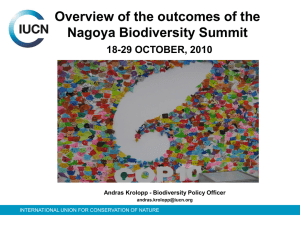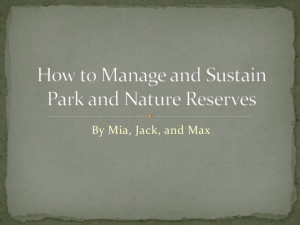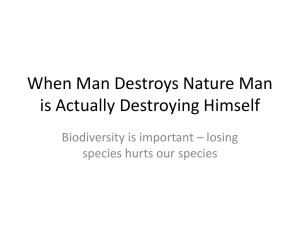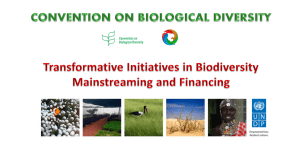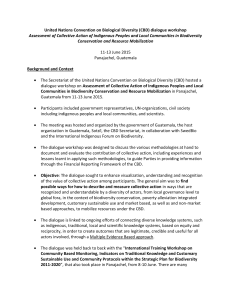File
advertisement
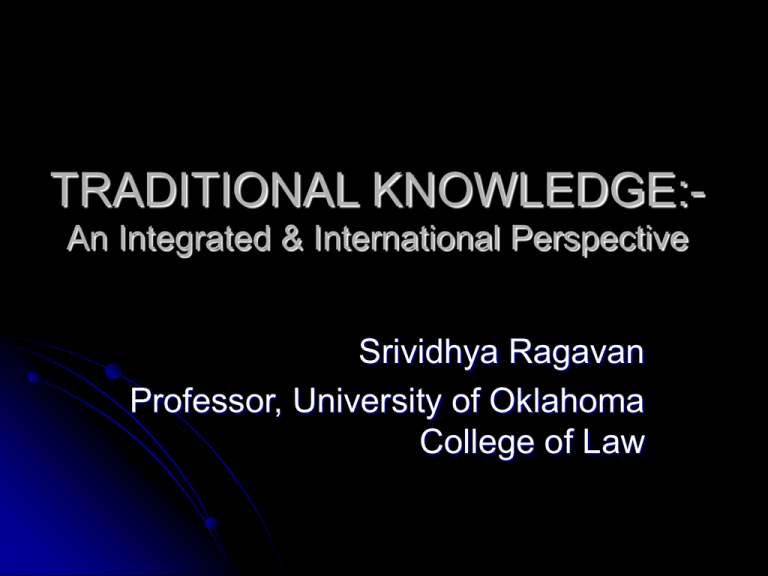
TRADITIONAL KNOWLEDGE:An Integrated & International Perspective Srividhya Ragavan Professor, University of Oklahoma College of Law At the Hong Kong Ministerial of the WTO, a discussion on GI generated the following comment: “intellectual property rights are instruments of industrial policy and that states express preferences not based on moral philosophy, but rather on whether they believe their national interests are maximized by granting or denying rights.” Any protection regime, whether IP based or sui generis should have an objective – hence it generates two questions: 1. Why do we need this protection? How is our national interest maximized? 2. Why Protect? Two reasons why countries seek protection for TK: 1. Get even with the developed world for imposing (IP) patents on the rest of the world 2. For generating economic benefits (maximizing national economic interest) Getting even … I do not think that we are trying to get even because of the following reasons: 1. A WTO based solution would be preferred for generating crosssubject reciprocity 2. Post – 1994, India has most successful when we worked with the WTO system rather than against it 3. If we want to get even, it does not explain national TK legislations 4. The current exercise is a self-imposition of regulatory and implementation burdens nationally and hence, we cannot be getting even. Maximizing National Economic Interest I find that the TK Bill has chosen an IP model despite India’s staunch stand against IP in international organizations. This is an IP based model because: 1. The Bill’s Preamble highlights “protection” as an objective. Any protection regime is based on the concept of intellectual property rights 2. Protection model is also paradoxical since 3rd world countries opposed IP rights to begin with. Sui generis models seem to follow IP Note that Regulatory & implementation costs in an IP based model reduces efficiency (Art. 40 argument). Q 1: How does the Bill provide for “protection?” – what happens when someone does not “protect” TK? Whether the legislation creates economic benefits, if so, for whom? The TK Bill is unclear on what it seeks to “protect/ regulate” Traditional Knowledge refers to the collective knowledge of a traditional community or a family related to a particular subject or a skill passed down from generation to generation for at least 3 generations including but not limited to … Whether the legislation creates economic Qbenefits, 2: What isif“collective” – or, what is not “collective” so, for whom? Q 3: What the difference “collectiveon knowledge” “public knowledge”? isThe TK Billbetween is unclear what itandseeks to - Rather, at what stage will “collective knowledge” become “public knowledge”? “protect/ regulate” Q 4: What is the test to determine whether a knowledge is “traditional” Traditional Knowledge refers to the as opposed to “modern” collective knowledge of a traditional community or a family related to a particular subject or a skill passed down from generation to generation for at least 3 generations including but not limited to … What should be protected? Definition of “traditional” remains important to ensure that there is no taking from public domain Any legislation on TK has to provide effective means for delineating public from private domain. Or, does it create a new quasi-private domain (given the nature of the information? How has other countries adopted it? Model 1 - ARIPO: Clearly defines “community rights” and “community knowledge” Ties the definition with bio-diversity protection along with a anthropological standard. The entire legislation is tied with biological diversity – something that the TK Bill in India is lacking 1. 2. 3. Tying with biological diversity makes the model more economically efficient because: TK interacts closely with biodiversity India already has an regulatory establishment under the National Biodiversity Act. Easier to add TK along Q 5: Lack of adequate co-relation between biodiversity & TK with that framework. In practice, it is very hard to delineate biodiversity with TK. Confusion between 2 sets of government authorities. Model 2: Costa Rican Uses a clear license based model. Does not get into delineating private and public domain. Instead, uses a simpler but more effective licensing structure. Interestingly, the recent trend, even in the US, is to create efficient protection structures using licensing (and not IP) models – even patent owners rely on this. This model also creates close nexus between TK and biodiversity. Advantages of this model: In associating with biodiversity, the Costa Rican model bridges some of the gaps from TRIPS 1. • • • Local working Local training Licensing for local use – all of this is done outside the purview of TRIPS. In dissociating with IP, this model provides broader scope for protection with less implementation costs and more scope for improving returns in the future. 2. • InBio a classic example Scenario 1 Developed Nations Access – for biotechnology assets that are protected as IP Developing Countries Return for local resources Problem area Not addressed by the Bill Issues for Developing Countries 1. Generating value from TK and biodiversity assets Most of these agreements are dependent on mutual agreement to generating value Bargaining positions are central to determining equities. Note: Qualifying by-products of bioprospecting immediately generates a market value. Q 6: Bill does not generate a mechanism for generating value of TK Why valuation? Objective: generating a value that distributes the risks and benefits of biodiversity assets proportional to several factors: Holding status; Potential market value; Need for access, etc Crux for solving issues from bioprospecting and TK acquisition Risk disproportionately borne by holder Bio Value Risk of capital (biodiversity) should be differentiated from risk of investment Market Value Benefits disproportionately enjoyed by accessor Models for valuing biodiversity Prospect Model Built on the need of biodiversity to prospector Base Compensation+ future value depending on disclosures Disclosure mechanisms need to be built into the agreement Information Model Prospector negotiates an initial rate based on prediction of success Each further test would be like purchasing an option based on rate of success Contract Based Model Assumes any value determined before a product comes to market is bound to be low Hence, the model creates a pre-determined risk v. need paradigm for every stage of research based on which further use of resource is negotiated. The original contract precludes use of material and its by-products under some reasonable circumstances. A footnote on TK & IP Objective should be maximization of returns using carefully sorted legal tools Any legislation needs a framework – TK Bill’s framework is unclear. The current Bill is so broad that the scope for misuse is higher than its ability to generate meaningful returns Cautionary Note: Biggest issue with the IP regime is over-protection French Wines serve as a classic example Implementation issues Hence, the need to be more careful with TK. Thank you.





